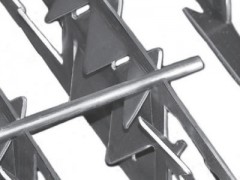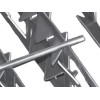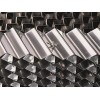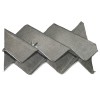Structured packing refers to a range of specially designed pack in different geometric structure and different materials. It is widely used in absorption and distillation columns and chemical reactors.
Structure of structured packing
Structured packing is consists of thin
A part of grid structured packing are placed on the ground.
Grid structured packing
Composed of several corrugated plates sheet with smooth surface. The corrugated plates are full-welded into rigid and solid pack to be used in fouling, erosion, coking and high solids content.
Protruded plate structured packing
Steel sheets are perforated very thin holes with thorn on the corrugated surface. Then the plates are assembled into packs to supply excellent separation performance and large liquid flow.
Consists several thin steel sheets. The steel sheets are perforated and then corrugated into packs for evenly liquid distribution and good surface wettability in high liquid loading applications.
Two pieces of plate plastic structured packing in different diameter on the gray background.
Ceramic structured packing
Made of several geometric corrugated sheets. It has high filtering and separating efficiency and better corrosion and high temperature resistance performance than steel structured packing.
Wire gauze structured packing
Steel wires are woven through plain, twill or dutch weave into gauze panels and then corrugated and assembled into packing to provide convenient conditions for distilling separation.
Plastic structured packing has plate type and wire gauze type. It has lightweight, large capacity and low pressure dro characteristics to be used in purify and environmental protection fields.
Advantages of structured packing
Low pressure drop.
Large contacting surface area.
High separation and filtering efficiency.
High capacity.
Reduced liquid hold-up performance.
Corrosion and high temperature resistance.
Applications of structured packing
Fine chemicals.
Solvent recovery.
Chemical product refining.
Atmospheric rectification.
Vacuum rectification.






